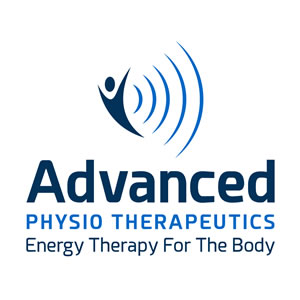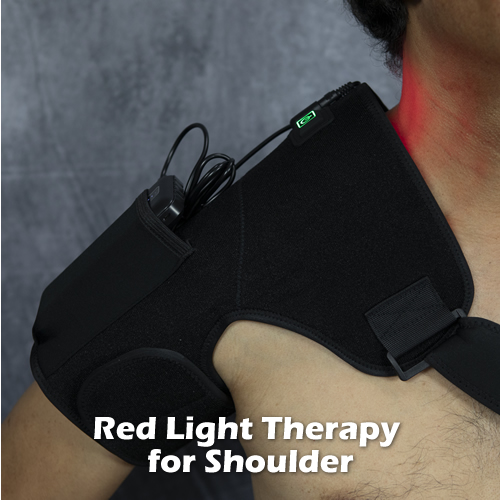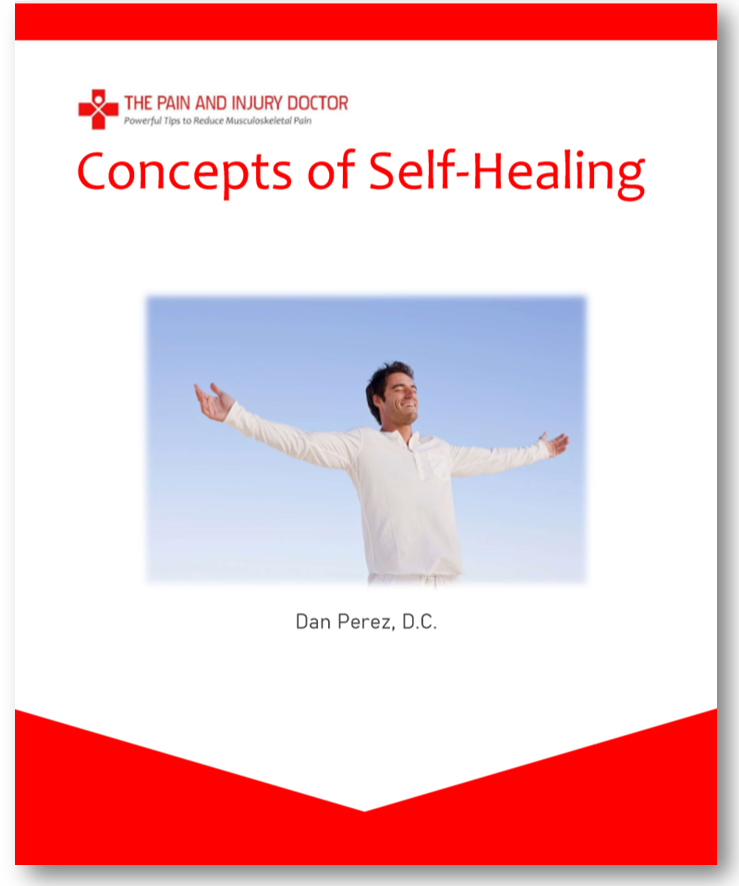
Can Pulsed Electromagnetic Field Therapy Help With Pain?
As a strong advocate for the advancement of science, the human capacity for ingenuity fascinates me. Not too long ago, if you were away from your home or office and needed to make a phone call, you had to find a pay phone and come up with a quarter. Now how ancient is that? If you wanted to check your email, you needed to have a dial-up internet connection on a big, bulky PC with big, bulky monitor. CDs were the data storage choice boasting 600 MB of storage, and now tiny MicroSD cards are capable of holding 32 GB of data (which will likely be exceeded by the time you read this). It seems that when certain milestone discoveries are made in technology, the floodgates open.
What separates humans from other mammals is the thirst for knowledge. We have to know why things are, and how to make things in our lives better. We observe phenomena, do research to determine cause and effect, and create machines, devices and other interventions like drugs to influence cause and effect to our advantage. It could be something to make a task or procedure easier; or a therapy to reverse disease in the body. Usually the first attempt is totally off and we have to start over again after doing more research. But as we experience degrees of success, we make tweaks to our invention until it works as best we can get it to work. This is the path taken by every single thing that ever was invented by mankind.
Let’s take for instance mankind’s development of electricity. In 1831, Faraday found that electricity could be produced through magnetism by motion. He discovered that when a magnet was moved inside a coil of copper wire, a tiny electric current manifests (later called induction) and flows through the wire. In 1820 H.C. Oersted demonstrated that conversely, electric currents produce a magnetic field. Inventors Thomas Edison and Nikola Tesla, among others, furthered this research which led to the major inventions of alternating current, the electrical generator, radio, radar and Wi-Fi.
A long time ago, it was hypothesized that the human body used electrical activity to drive its many life functions such as movement, thought, growth, organ function and tissue healing, to name a few. When instruments were invented to detect electrical charge, we found this to be true. We know for instance that nerve impulses are the movement of positive and negative charges along a nerve; that the heart works by synchronized electrical charges that contract its four chambers to pump blood; and that there are sodium-potassium pumps (Na+/K+) that maintain proper electrical charges across the cell membrane (voltage), which drives the transport of water, proteins and nutrients into and out of the cell.
We also know, thanks to Faraday and Oersted that electricity and magnetic fields occur together in nature. When electricity flows it induces a magnetic field perpendicular to its direction of flow. Likewise, moving magnetic fields cause movement of charges (electricity flow) in a conductor.

We learned way back when we were kids that magnetic fields attract metals (ever played with one of those horse shoe magnets as a kid?). When we think of metals we usually think steel and iron. But did you know that sodium (Na), potassium (K), calcium (Ca), and magnesium (Mg) are also metals? Check the Periodic Table of Elements if you don’t believe me. As metals, they respond to magnetic fields. These of course are very important elements your body needs in order to function properly. The metals copper (Cu) and iron (Fe) are also needed by your body in trace amounts, often to catalzye numerous biochemical processes. Referred to as micronutrients, we get them from the food we eat (plants and animals), which get them from the earth’s soil. When these elements lose or gain an electron, they exist as ions and now have an electrical charge, which enables them to create voltage in your cells and drive tiny electrical currents to move things.

It is not known when humans first realized a connection between the electrical nature of the human body and health. Some say the use of magnetic therapy with natural magnets, or lodestones, goes back to 2000 BC when it was used by Aztec Indians and ancient Greeks, Egyptians and Chinese. In the late-18th century, German physician Samuel Hahnemann, widely known as the father of alternative medicine’s homeopathy, was reputed to use magnets in his treatment programs. In the mid-19th century D.D. Palmer, the father of chiropractic was a “magnetic healer” before he turned his attention to spine and nervous system.
If you’ve ever been to an acupuncturist, you probably know about ear magnets– tiny magnetic beads taped to various acupuncture points, usually in the outer ear. Acupuncture is based on the theory that disease in the body is related to blockages in the flow of energy along meridians mapped on the body’s surface, and that those blockages can be removed with needles inserted in certain acupuncture points along the affected meridian. While this might have sounded skeptical and quirky in the past, the fact that the human body relies on tiny electrical currents to function properly, and that electrical currents generate magnetic fields lends validity to acupuncture (a branch of traditional Chinese medicine). Could it be that the “energy flow” in acupuncture is actually the flow of the body’s magnetic fields, much like the magnetic fields of the Earth?

This brings us to the topic Pulsed Electromagnetic Field Therapy, or Pulsed EMF or just PEMF. This technology was first used in the 1960s (back when a visit to the doctor’s office or hospital wasn’t so money and insurance driven) to help non-union fractures heal faster, which they did with the help of PEMF. It’s making a comeback, because recent research shows multiple health benefits of pulsed EMF such as decreased pain, decreased inflammation, improved wound healing, improved sleep, and improved energy levels. We’ve identified the low magnetic frequencies naturally emanated by the body, such as by the brain, heart, muscles and skin, and how they can be helped/ augmented by PEMF which duplicates these magnetic field frequencies.


With the surge of mobile device use, along with Wi-Fi and Bluetooth the typical person is constantly bombarded with unnatural, high frequency magnetic fields which can disrupt or weaken the body’s own magnetic fields. This puts the body at a disadvantage especially when it is trying to heal from an injury or fight a disease.
Since the thousands of biological processes that occur every second in the body involve the movement of tiny electrical charges, these processes can be positively influenced by pulsed magnetic fields of a certain frequency, generated externally:
• Proper blood circulation
• Instructions from the nervous system
• Production of energy
• Transfer of nutrients
• Elimination of waste, toxins and dead cells
• Reduction of inflammation
• Defense through the immune system
• Repair and regeneration
• Need for mobility
• Operation of the senses
• Production and use of hormones
• Protection from the environment
Pulsed EMF devices are generally safe to use as they are low frequency and relatively low energy. They are so safe that you do not have to be a doctor to acquire one for personal use.
Note: higher frequency electromagnetic energy such as those produced by cell phones and power lines are the ones that are potentially harmful. PEMF puts out much lower frequencies (1-100 Hz) that match the human body’s and are therapeutic in nature.
When you apply PEMF, you are essentially giving your body’s cells and tissues an energy boost by providing magnetic field strength to augment the fields that drive various cell activities which are weakened or abnormally functioning during injury, pain and disease. The result is more efficient cell processes, which leads to positive biomarkers such as reduced inflammation, reduced pain signals, improved protein synthesis, improved cell waste disposal, and improved membrane transport. The noticeable signs following PEMF therapy are not due to pain blocking, but rather improved biomarkers. This is basically true healing.

Today, many people use Pulsed EMF for chronic pain from arthritis and other degenerative conditions; heart and cardiovascular disease, stress, insomnia and a host of other problems. However, it is improper to state that PEMF can be used to “cure” or even “treat” a disease; rather, PEMF is used to boost the body’s natural maintenance and reparative processes on the cellular level so that it can overcome the disease and return the body to a healthier state. It’s like how regular exercise doesn’t cure heart disease but can nevertheless improve cardiovascular health by burning excess fat, lowering cholesterol and strengthening the heart muscles.
If you are experiencing chronic pain; have low energy, get sick often and find yourself having to see the doctor often, look into getting a Pulsed EMF device. It’s a great investment in your health and may actually save you a lot in annual health expenses (doctor visits, therapy, medications, sick days and so on). More importantly, it may improve your quality of life. Stay tuned for more ways Pulsed Electromagnetic Field Therapy can be used to reduce or eliminate pain, and help with other health conditions.
In the meantime, watch this YouTube video where I explain PEMF.
Credits to:
Biography. Nikola Tesla. 2015.
https://www.biography.com/inventor/nikola-tesla
A Brief History of Magnets and Medicine. The Journal Times. 2002.
Pawluk, William MD. Power Tools for Health: How Pulsed Magnetic Fields (PEMFs) Help You. Friesen Press, 2017.











 The human body has magnificent intelligence to monitor, maintain, and repair itself 24/7. These complex, biological functions are the result of millions of years of evolution and of course play a major role in the survival and thriving of our species.
The human body has magnificent intelligence to monitor, maintain, and repair itself 24/7. These complex, biological functions are the result of millions of years of evolution and of course play a major role in the survival and thriving of our species.























